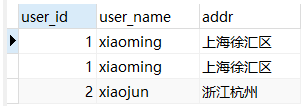MySQL index tuning principles
- It is forbidden to join more than three tables
- Left prefix rule of joint index
- Prohibit back to table query
MySQL query explain type level
- All full table scanning, the most native sql state, has a lot of optimization space
- Index is another form of full table scanning. The scanning order is the order of the index. The scanning is based on the index, and then the data is queried back to the table
- Range refers to a full table scan with a range, which is better than index with a range
- The ref query condition uses the index instead of the primary key and unique. Although the index is used badly, the values of the index columns are not unique and duplicate
- ref_eq is better than ref in that it knows that there is only one search result set of this type, either a primary key index or a unique index
- const constant, when the index is almost optimal, and the remaining optimization depends on the optimizer.
MySQL-EXPLAIN-Extra
using index : Appears when the index is overwritten with using where: When using an index, you need to query the required data back to the table using index condition: The index is used, but the data needs to be queried back to the table using index & using where: The index is used, but the required data can be found in the index column, so there is no need to go back to the table
//Ordinary index, xxx identifies the field name alter table table_name add index idx_xxx (xxx) ; //Unique index, xxx identifies the field name alter table table_name add unique (xxx) ; //Primary key index, xxx identifies the field name alter table table_name add primary key (xxx) ; //Delete index drop index index_name on talbe_name
Create two tables, user table and user class table, one to many association relationship, and associate through user's id
Table structure DDL is as follows
User table
CREATE TABLE `test_user` ( `user_id` int(11) NOT NULL AUTO_INCREMENT, `user_name` varchar(255) DEFAULT NULL, `addr` varchar(255) DEFAULT NULL, PRIMARY KEY (`user_id`) ) ENGINE=InnoDB AUTO_INCREMENT=3 DEFAULT CHARSET=utf8;
Class table
CREATE TABLE `user_class` ( `class_id` int(11) NOT NULL AUTO_INCREMENT, `user_id` int(11) DEFAULT NULL, `class_name` varchar(255) DEFAULT NULL, PRIMARY KEY (`class_id`) ) ENGINE=InnoDB AUTO_INCREMENT=4 DEFAULT CHARSET=utf8;
Perform an association query after adding test data
EXPLAIN SELECT a.user_id,a.user_name,a.addr from test_user a left join user_class b on a.user_id = b.user_id;
Query results

It looks ok, but it's very inefficient
View with EXPLAIN tool

It is found that the sql initiated two queries this time, both of which were full table scans, indicating that there is still a lot of room for optimization.
First give the associated table and the associated user_ Add a common index to the ID primary key
alter table user_class add index idx_user_id (user_id);
Use explain again

The second query has changed from All to ref in the whole table, indicating that the index has been taken
test_ The user table structure is modified to
CREATE TABLE `test_user` ( `user_id` int(11) NOT NULL AUTO_INCREMENT, `user_name` varchar(255) DEFAULT NULL, `addr` varchar(255) DEFAULT NULL, `age` int(255) DEFAULT NULL, `sex` varchar(255) DEFAULT NULL, PRIMARY KEY (`user_id`), KEY `idx_add_age_sex` (`addr`,`age`,`sex`) ) ENGINE=InnoDB AUTO_INCREMENT=3 DEFAULT CHARSET=utf8;
For single table query
EXPLAIN select a.addr,a.age,a.sex from test_user a

You can see that these three conditions are returned. The full table scan is followed by optimization
Index invalidation of Federated index
The joint index of a single table is optimized
Add a federated index to the user table
alter table test_user add index `idx_add_age_sex` (`addr`,`age`,`sex`)
Query again after adding

It is found that the index is reached and the full table scan of the index is used
If you bring the where condition
EXPLAIN select a.addr,a.age,a.sex from test_user a where a.addr = 'Hangzhou, Zhejiang' and a.age=22 and a.sex=0

It was found that there was no problem. We did go to our joint index for query
But if you change to
EXPLAIN select a.addr,a.age,a.sex from test_user a where a.age=22 and a.sex=0

At this time, the index is used to scan the whole table, and the efficiency is significantly reduced
What if you change the order
EXPLAIN select a.addr,a.age,a.sex from test_user a where a.age=22 and a.addr = 'Hangzhou, Zhejiang' and a.sex=0

You can see it's gone again
What if you remove the middle of the union index?
EXPLAIN select a.addr,a.age,a.sex from test_user a where a.addr = 'Hangzhou, Zhejiang' and a.sex=0

You can see that the union index is still gone
It can be concluded that when querying a joint index, there must be the first index as the condition in where. The order of the left prefix principle will be optimized and the order will be changed at the bottom of mysql.
Avoid back to table queries
Compare the following two paragraphs
EXPLAIN select a.addr,a.age,a.sex,a.user_name from test_user a where a.addr = 'Hangzhou, Zhejiang' and a.age=22 and a.sex=0

EXPLAIN select a.addr,a.age,a.sex from test_user a where a.addr = 'Hangzhou, Zhejiang' and a.age=22 and a.sex=0

The Extra in the first paragraph of SQL indicates that the underlying layer performs a back table query, that is, the data to be returned is not within the data range that the index can reach, so it returns the table query again to get all the required data